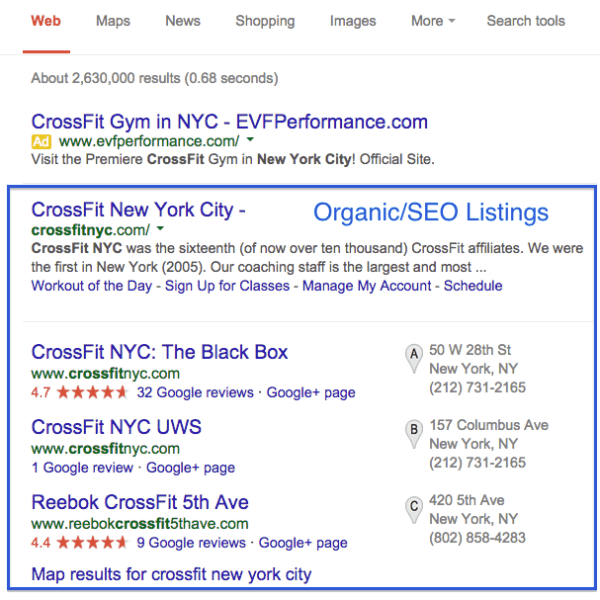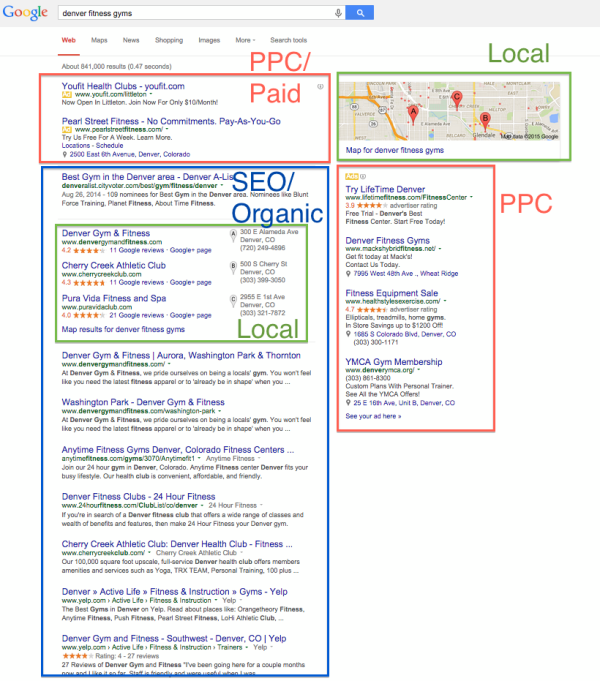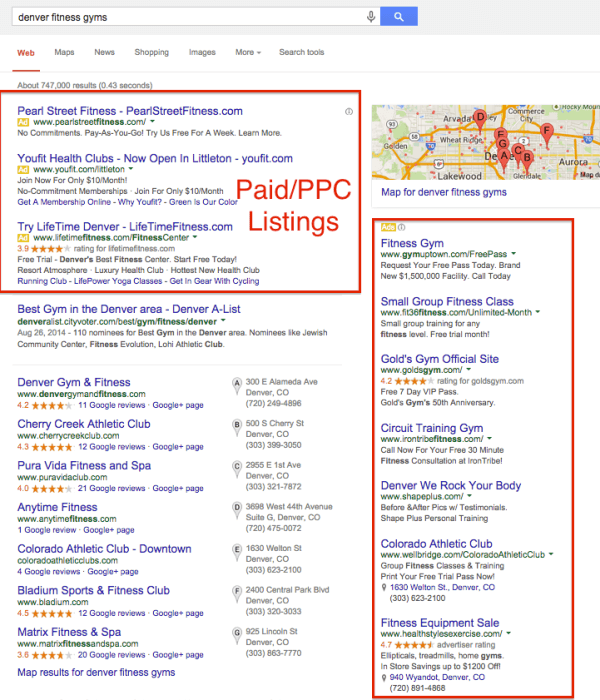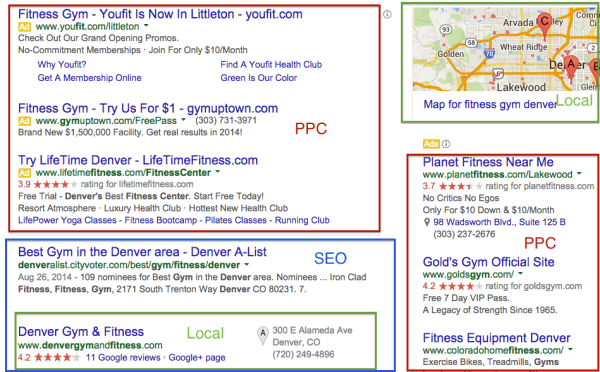An Introduction to Search Engine Marketing
For the past five or so years I’ve been working as an internet marketing specialist. I’ve been in this game so long that I commonly forget that much of the terminology and acronyms I use on a daily basis sound like another language to most people. A great example of this is when I started doing pay-per-click advertising and my mom was telling her friends that I had some sort crazy marketing job that involved something called “paper click.”
SEO, SEM, CTR, CPC, CPL, mobile search, local search, social search, etc. are common search engine marketing terms that every business owner needs to know. Over the next several weeks I’ll be sharing my search knowledge in a series of blog posts so that you too can become a search engine expert for your fitness business. So, let’s start with the basics.
Search is a Pretty Big Deal
You’ve probably heard what a massive beast Google is, and why your fitness business needs to have a presence on it. Although everyone knows that search engines are widely popular, when you actually dive into statistics around search, they’re quite shocking.
- According to the International Telecommunication Union (ITU), almost 3 billion people, 40% of the world’s population, are using the Internet.
- 93% online experiences begin with a search engine.
- Worldwide, 131 billion searches are conducted each month on the web. 12 billion of these searches occur in the US.
- Search Engine Watch reports that organic search on average was the largest driver of traffic to websites last year.
- 86% of consumers stated that using a search engine allowed them to learn something new or important that helped him/her increase his/her knowledge.
- If you’re not on the first page of Google, and more importantly if you’re not located in the first couple positions, you will not be able to get significant traffic to your site.
- 75% of users never scroll past the first results page.
- 60% of all organic clicks go to the top three organic positions in Google.
So What Exactly Do SEO, PPC and SEM Stand For?
As mentioned earlier, I’m constantly dropping the acronyms SEO and PPC, forgetting that they aren’t in most peoples’ daily vocabulary. If you don’t know what these stand for, you’re not alone.Search Engine Optimization, or SEO, is the practice of improving your website to help it obtain better organic positioning in the search engines. Improvements can be made both on and off of your site to help it rank better. Organic listings are those that show up in the natural search results, which are typically located in the middle of the results pages. You do not have to pay to show up in organic positions.

Local search engine optimization is the process of updating business listings on various websites such as Google, Yelp and Bing to help improve the visibility of your business on the web. Any time a user searches on a geo-specific term (ex: crossfit gym new york city) local listings will appear.

Pay-Per-Click (again, not to be confused with “paper click”), or PPC, is a paid form of advertising on platforms like Google, Bing and Facebook. With PPC, advertisers organize a list of keywords that they would like their ads to show up for, and then pay for actual clicks to their ads. Paid ads typically show up at the top, bottom and right-hand side of the results pages.

Search Engine Marketing, or SEM, encompasses all of your internet marketing efforts, including PPC and SEO, as well as the marketing work done on social networks, paid directory sites, media placements, press releases and more.The search engine results page, or SERP, is the combination of results a search engine, like Google, gathers based on a specific search term. Below you will find an example of how a SERP is compiled of paid, organic and local listings.

Over the next several weeks, we will take a deeper dive into SEO, PPC, local and social to help better explain the importance of these marketing tactics, and provide solid recommendations on how you can make small improvements immediately to start getting better visibility for your fitness business on the web.
If you’re looking for additional ways to improve your marketing efforts today, get your copy of our 10 Step Marketing Guide for Gyms.

I’m Coach Kelli, a devoted CrossFit gym owner with 15 years of experience managing my facility, along with owning yoga studios and wellness centers. Beyond the fitness world, I have a passion for cooking, cherish moments with my children and family, and find joy in spending time outside. Having experienced the highs and lows, I’m dedicated to leveraging my expertise to help you grow and succeed on your fitness journey.

I’m Coach Kelli, a devoted CrossFit gym owner with 15 years of experience managing my facility, along with owning yoga studios and wellness centers. Beyond the fitness world, I have a passion for cooking, cherish moments with my children and family, and find joy in spending time outside. Having experienced the highs and lows, I’m dedicated to leveraging my expertise to help you grow and succeed on your fitness journey.




